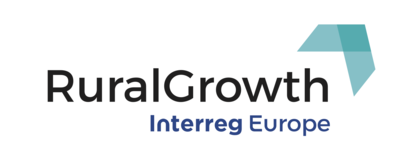

Local Government of Nagykanizsa is the centre of the South part of Zala County and also of the crossborder Mura region. This area has outstanding natural
resources, which, together with the living traditions possess immense potentials for boosting green rural leisure and hospitality industry. The territory is characterised by small villages and is recognized among Hungarian regions as one most affected by the negative impact of the economic crisis resulting in high outmigration paired with depopulation due to the lack of local employment and business opportunities. Thus there is a strong need for creating new jobs that are sustainable in the long run. In line with the Spatial Development Concept of Zala County, key break out points would be the empowerment of SMEs through improving their capacity for innovation uptake and access to new, particularly transborder markets along with boosting the traditional rural economic sectors to be marketdriven and smart. These two development aspects can be perfectly combined within a communitybased, responsible visitor economy.
EmiliaRomagna in the North of Italy is one of the most urbanized and economically advanced regions in the EU, with a wellbalanced economy that also comprises Italy's biggest agricultural and food sector. The Po Delta Park has the biggest Italian extension of protected wetlands registered in the Ramsar Agreement and parts of it also as “World Heritage Sites”, thus naturalistic excellence and cultural heritage coexist here. The most important territorial goal of the Po Delta area is to become a wellknown slow tourism destination at European level. Slow (eco)tourism builds on local resources (e.g. traditional agricultural products, gastronomy) and is based on the activity of a broad range of local SMEs also offering opportunity for additional income those outside the conventional tourism sector (e.g. farmers, craftsmen). The task of local associations such as Delta is bringing information on development trends and support mechanisms closer to local entrepreneurs. This also means involving SMEs in projects aiming at developing sustainable forms of rural tourism (slow tourism) valorising local natural assets based on innovative ideas, advanced technological solutions and novel marketing techniques backed by proper financing.
Medina del Campo is located in Castilla y León region, where economy is mostly based on farming and related processing industry and trade. The town is renowned for the historic tradition of fairs and its visitor economy relies significantly on local traditions of production, mainly wine making. According to statistics 99,93 % of the enterprises of Castilla y Leon are SMEs of which 95,95 % are in the micro category. Nearly half of the companies operates in the service sector, predominantly in activities related to tourism. Valorisation of the endogenous resources and promotion of local entrepreneurship are priorities for support at regional level, and also fostered by local development support schemes. The cohesion of SMEs in the leisure and tourism sector is getting stronger which is best reflected by the Rueda Wine Route comprising more than a hundred touristic and oenological (winemaking) agents.
The Region of Drenthe has attractive potentials (heathlands, national parks and protected landscapes) mainly in slow tourism due to the widely respected quietness of the province. Drenthe is also known as the "Cycling Province" of the Netherlands and is an exceptional place, due to extensive networks of cycle paths through forests, heaths and along canals. Many towns and villages of the province join in serving the visitors on their way. However, the assets are not exploited in an inclusive and sustainable manner, and even more forms of attraction could be developed and linked to the existing ones in the forms of novel services as well. The region needs an approach in promoting its SMEs, which finally produce a more dynamic region relying on its own local resources, inhabitants and companies, creating a more vibrant community with also new social innovations.
Harghita county embraced by the Carpathian mountains is especially rich in natural beauties and cultural heritage and is a very popular tourism destination. Visitor economy represents a major source of income in the county, the related services and production contribute to local employment substantially.
The activities accomplished so far have been concentrated on the elaboration of a quality management system of branding and marketing of products. Branding contributes to building a visitor economy as it helps to enforce the local identity and stimulates crosssectoral partnerships. Despite the successful achievements, there is still a high need to improve SMEs’ competences and capabilities to operate as part of a larger network reaching beyond even the sectoral stakeholders.
Rural SMEs active in the visitor economy around the Lake Saimaa having highquality products based on local resources and traditions have good potentials for wider distribution of their offers. Possibilities for combining tourism brand development and wellmarked consumer brands for more effective marketing of the Lake Saimaa area should be explored. Integrating characteristic local products (specialised homemade products, food, handicrafts) into regional branding and including the principles of sustainability in the value proposition (e.g. organic products) represents new business opportunities that should be properly utilised. The coordination of points of sales and attractions should be also supported by developing online consumer paths providing direct selling systems for the benefit of local SMEs.